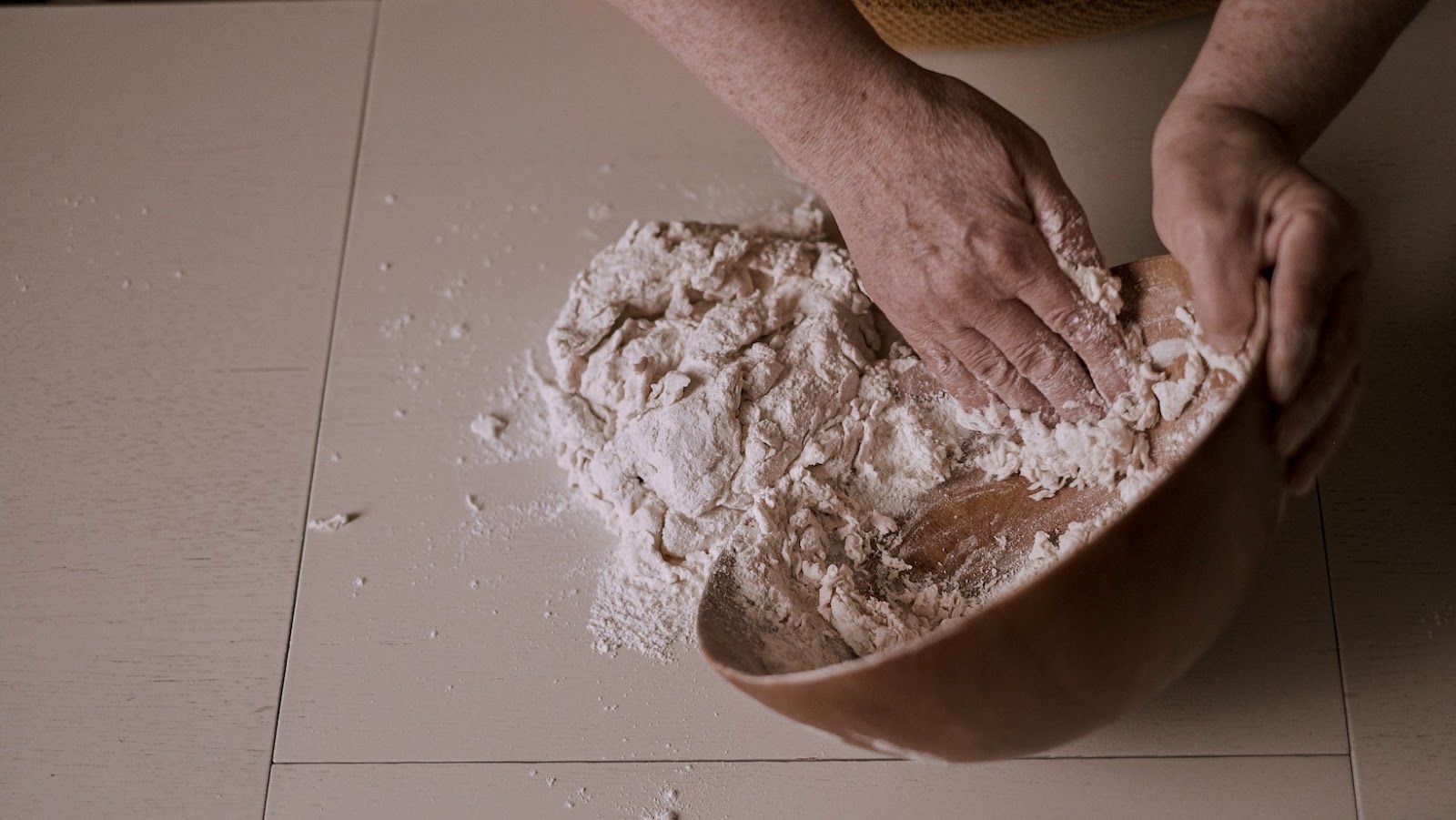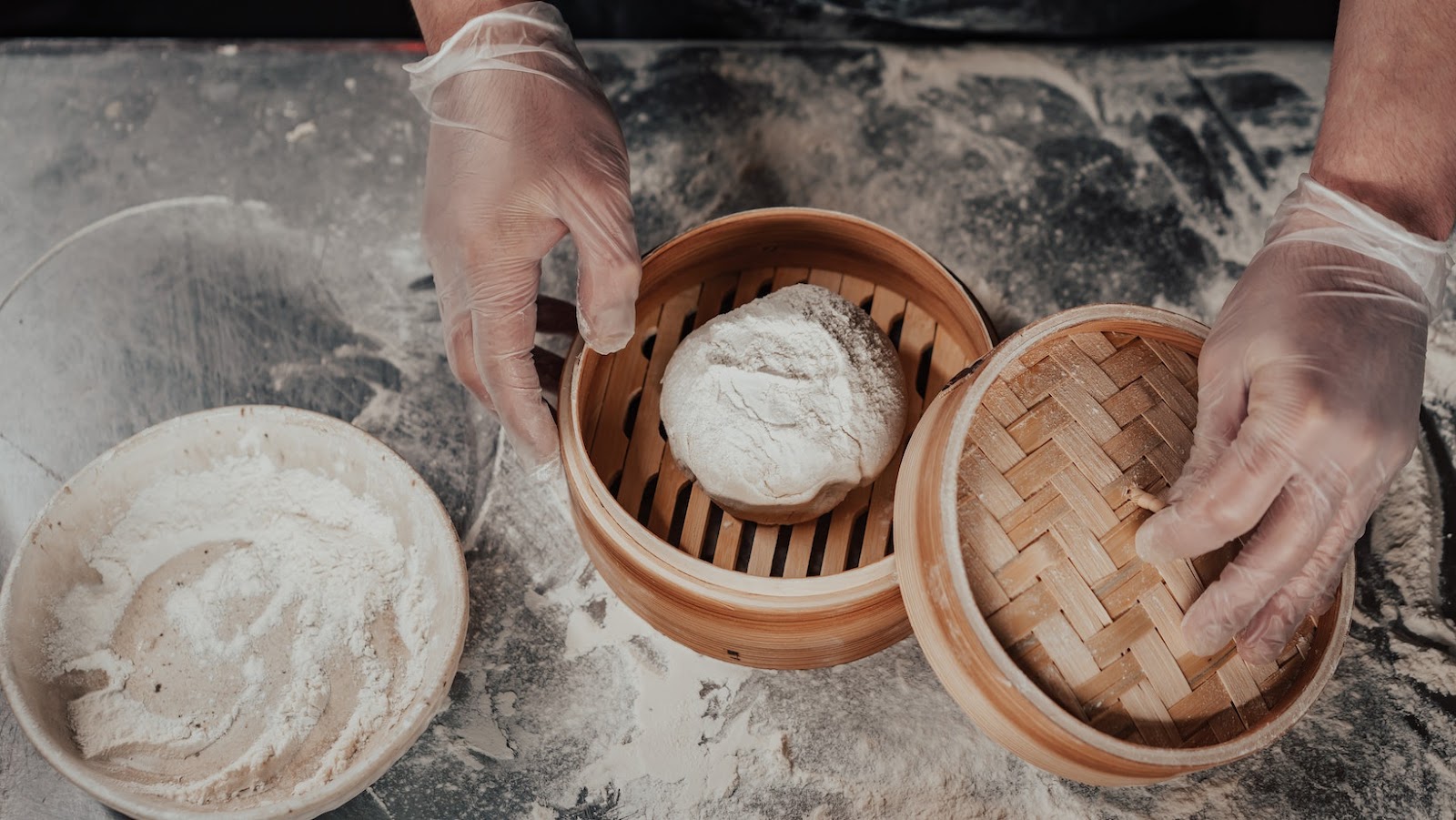
How to Make Sourdough Bread Last Longer
Storing Sourdough Bread
Paragraph 1:
To maintain the freshness of sourdough bread, it is vital to store it correctly. Improper storage can quickly lead to staleness, mold, and a shorter shelf life.
Paragraph 2:
Here’s a 4-step guide to storing sourdough bread to keep it fresh for a longer time:
- Wrap the bread in a clean cloth or paper towel to absorb moisture and prevent the crust from becoming too hard.
- Place the wrapped bread in a paper bag or bread box. Avoid using plastic bags as they trap moisture and cause the bread to become moldy faster.
- Store the bread in a cool and dry place, such as a pantry or cupboard. Avoid storing it in the fridge as the cold temperature accelerates the staling process.
- If the bread is not going to be consumed within a few days, slice it and freeze it in an airtight container.
Paragraph 3:
It is crucial to note that sourdough bread has a longer shelf life compared to other bread types due to its natural acidity. However, storing it correctly is still vital to prevent it from becoming stale or spoiled. Additionally, using a bread knife with a serrated blade can help maintain the bread’s shape and texture when slicing.
Paragraph 4:
A sourdough bread enthusiast once shared how she was amazed at the shelf life of sourdough bread after properly storing it in a paper bag in her pantry. She noted that it was unlike any other bread type she had tried before. The bread maintained its texture and taste for over a week, making her a devoted fan of sourdough bread.
Say goodbye to moldy bread and hello to a longer shelf life with a trusty bread box – it’s like a VIP room for your sourdough.
Using a Bread Box
For keeping sourdough bread fresh and tasty, it’s essential to store it properly. A bread box is ideal! Here are four tips for using it effectively:
- Pick a wooden or ceramic one that allows air to pass through.
- Place the loaf in with the cut side down.
- Don’t stuff it too full – just one or two loaves at a time.
- Clean the bread box often to prevent mold.
Store sourdough in a dry place, away from moisture and heat. Don’t use plastic bags – they trap moisture and lead to staling. Keep the storage spot temperature consistent with lots of airflow. “The Perfect Loaf” suggests wrapping sourdough in cloth like a burrito – carbs are life!
Wrapping in Cloth
Cloth Wrapping: The Eco-Friendly Way To Preserve Sourdough Bread
- Cut slices 1/4″ wide.
- Wrap in a dry, clean cloth or linen.
- Put wrapped bread in an airtight container.
- Store in a cool place like a pantry, cupboard, or fridge.
- No moisture! Mold growth will spoil your bread.
- Pro Tip: Cloth wrapping helps humidity and flavor.
- Freeze for cryogenic preservation – without sacrificing the taste.
Freezing
Preserving Sourdough Bread with cold temps can be a great way to make it last longer. Here’s a guide:
- Cut with a serrated knife.
- Wrap each slice in parchment paper or plastic wrap.
- Store slices in an airtight container and freeze for 6 months.
You can also store at room temperature, but only for a couple of days.
Fun Fact: Fermenting dough with bacteria & yeast is an old-school way to preserve bread & add flavor. Give your sourdough starter a home in the fridge & it may throw a party!
Storing Sourdough Starter
To make your sourdough bread last longer, you need to know how to store your sourdough starter. This section on storing sourdough starter discusses different methods to maximize the freshness of your bread. Learn about using a bread box, wrapping your bread in cloth, and freezing to extend the shelf life of your delicious sourdough creations.
Discarding Excess Starter
Managing Sourdough Starter? Get rid of any crust and half the content. Discard what you removed, keeping some behind for your recipe. Feed it regularly and refrigerate for up to 10 days. When discarding, use the by-product in pancakes, biscuits and pizza dough to create tasty treats.
Sourdough has been around since Ancient Egypt, 2,500 years ago. It was an excellent way of keeping bread fresh without preservatives. Temperature is key – don’t let it become a science experiment gone wrong!

Keeping Starter at The Right Temperature
Achieving the best flavor and consistency in your sourdough bread requires optimal temperature. Here are four steps to make sure you get it right:
- Pick the right place – Somewhere between 70-85°F (21-29°C).
- Get a thermometer – Place it in the storage spot.
- Adjust according to room temp – Especially during season changes.
- Cooling methods – Place near a window or cool surface.
Different starters have different needs. Monitor these details to get better results.
Invest in an oven with lights or custom box to control and monitor storage more accurately.
Optimal temp leads to consistent fermentation and yummy bread. Care and attention make a difference!
Sourdough Bread Preservation Tips
To make sourdough bread last longer, you need to follow a few preservation tips with the right technique. Discarding excess starter and keeping starter at the right temperature are two essential sub-sections that can help you to keep your sourdough bread fresh for a longer period.
Not Slicing Bread Until Needed
When it comes to keeping sourdough bread fresh, it’s best not to cut it until you need it. Here’s a 3-step guide on how to do it:
- Put the whole loaf in a paper or plastic bag.
- Put the bag in an airtight container or wrap it with foil.
- Store it in a cool, dry place away from sunlight or heat sources.
It’s important to note that cutting the bread causes moisture loss, which can make it go stale faster. So, if you wait until you’re ready to eat it before slicing, you can ensure maximum freshness.
Pro Tip: For extra protection, store your wrapped bread in the fridge for up to 5 days. Just make sure to bring it back to room temperature before eating. And don’t forget, clean utensils are vital for preserving sourdough – unless you want a side of bacteria with your bread!
Using Clean Utensils
Gotta Keep Your Cookware Clean for Perfect Sourdough!
Making sourdough can be tricky. You need the right temp, hydration, and ingredients. To keep it fresh and yummy, you must sanitize your tools. Here’s what to do:
- Pre-rinse with hot water
- Clean with mild dishwashing soap
- Soak in sanitizing solution for 10 minutes
- Rinse well with hot water and air dry
You must also clean utensils like knives, cutting boards, and mixing bowls properly to avoid bacteria. A good sanitizing routine can make your bread last for days or even weeks!
Don’t let your delicious loaf go to waste due to hygiene issues. Sanitize your tools the right way each time – it’ll keep your bread fresh and tasty for longer! Remember, all that hard work is worth it – much better than an ex who won’t stay away!
Avoiding Moisture
Safeguarding Sourdough Bread from Dampness – Tips to Follow!
To ensure your sourdough bread stays fresh and delicious, follow these tips:
- Store your bread in a cool & dry place to prevent moisture buildup.
- Avoid wrapping it up in plastic, as it traps moisture & reduces crispiness. Instead, use a paper bag or kitchen towel to cover it.
- Only cut the loaf into slices when needed – this exposes it to more air & humidity.
- Don’t leave it uncovered for too long after slicing, as that speeds up staling.
- Keep it away from any source of heat or sunlight, as both contribute to rapid spoilage.
- Reduce internal moisture content by using flour with lower hydration levels or allowing longer bake times.
- For freshness & a longer shelf life, air-tight containers are the go-to superhero capes of the bread storage world!
Using Air-Tight Containers
Air-tight containers are great for keeping your sourdough bread fresh! Use food-grade, sealed containers.
- Store in a cool, dry place.
- Slice the bread before storing.
- Don’t overcrowd the container – let air circulate.
- Keep in mind that your bread won’t last forever. To extend its shelf life, freeze portions or make croutons.
Enjoy your sourdough before it goes stale!

How to Keep Sourdough Bread Fresh
To keep your sourdough bread fresh for longer, follow these simple tips. With “Not Slicing Bread Until Needed,” “Using Clean Utensils,” “Avoiding Moisture,” and “Using Air-Tight Containers” as solutions, you can extend the life of your sourdough. These sub-sections offer practical advice on how to ensure that your bread stays tasty and enjoyable for days to come.
How Long Sourdough Bread Lasts
Sourdough bread can stay fresh for up to a week when stored correctly. Wrap it tightly in a clean cloth or plastic wrap and store it at room temperature. Don’t refrigerate as this makes it stale faster.
To keep the crust from drying out, only cut what you need. Slice the whole loaf at once and it’ll go off faster. Whole-grain flour sourdough lasts longer than refined flour, and adding honey or olive oil increases moisture and keeps it fresher.
Experience the unique flavor and texture of freshly baked sourdough within a day or two. Once it smells like an old gym sock, it’s time to bid farewell!
Checking For Freshness
Assessing Sourdough Bread Quality
When it comes to assessing sourdough bread, there are several points to consider. Here are six of them:
- Crisp and fresh crust
- Aroma of acidity and yeast
- Moist and chewy crumb
- Uniform color and shape
- No mold or bad smell
- Good taste without compromising flavor
Assessing freshness is key in maintaining quality standards. Each batch is different, so checking freshness is a must. Do not store your loaf in plastic bags. This will reduce the bread’s optimal qualities.
KU Leuven University conducted research on sourdough fermentation which preserves lactic acid bacteria. This helps prevent fungus-based spoilage. Also, longer fermentation time lowers pH levels which limits microbial growth. This keeps the bread fresher than commercially yeasted bread.
Revive your stale sourdough with water and a short toast!
Refreshing Stale Bread
Reviving sourdough bread is a breeze! Follow these 4 steps:
- Preheat oven to 350°F (175°C).
- Wrap a damp towel around loaf.
- Place in preheated oven for 5-10 minutes.
- Unwrap and enjoy!
Store in airtight container at room temp for moistness & flavor.
Did you know sourdough was once called all-consuming? People used to rely heavily on it.
Give stale bread a second chance! Turn it into croutons, bread crumbs or use as a makeshift weapon for food fights!
Reusing Stale Bread
Don’t let stale bread go to waste! You can turn it into breadcrumbs, croutons, French toast, bread pudding, or cubes for stuffing. Freeze any excess in an airtight container to use later. To keep your fresh bread from going stale, store it at room temperature in an airtight container. Avoid placing it near sources of heat. Reuse stale bread and store fresh bread properly to get the most out of your baked goods! And, don’t let your sourdough bread become too fresh – it may think it’s too good for you and demand avocado toast!
Additional Tips For Keeping Sourdough Bread Fresh
For freshness, store Sourdough Bread in a bread box or paper bag. Not plastic – moisture can lead to mold. Plus an apple slice! Frozen Sourdough can last up to 6 months, just thaw at room temp before use. Refresh day old slices by toasting or broiling. Refrigeration is a no-no; it’ll dry out the bread. Add salt when baking for a longer shelf life. And remember: using good ingredients makes a big taste and longevity difference.
